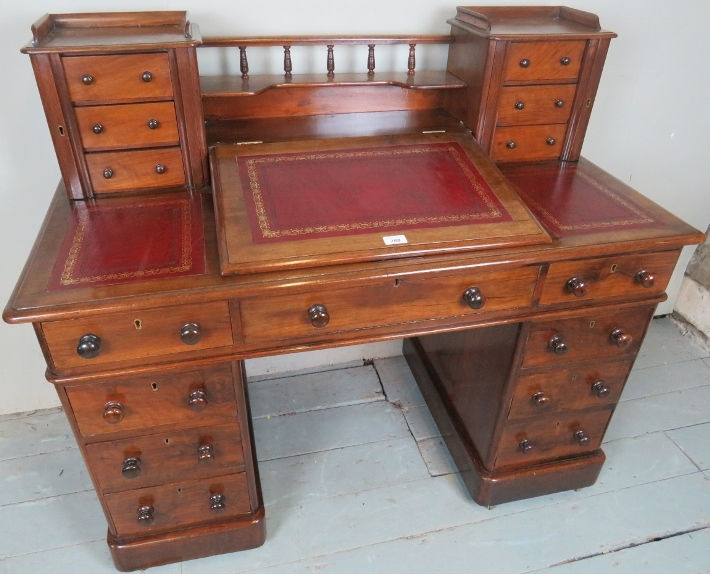Ahead of this month’s Furniture & Interior furnishings auction on 7th July, we take a look at antique writing desks.
First up is lot 703, the excellent quality Edwardian Carlton House desk.

Carlton House desks are believed to have been originally designed for the Prince of Wales by George Hepplewhite in the 18th Century, named after Carlton House, London.
This Edwardian version is typical in its curved ‘U’ shape form created by a bank of several small drawers, cabinets and sloping pigeon hole cabinets to top designed to ensure your ‘staff’ can’t read your private letters!
Next up is lot 758, A fine Victorian mahogany Dicken’s desk

Next up is lot 758, A fine Victorian mahogany Dicken’s desk. In a new age of ‘hot desking’ its no wonder we sometimes lack motivation when we eventually manage to sit, bleary eyed, at our desks, coffee in hand. For those of you who work from home however, who better to inspire you while writing your next best selling novel, than Charles Dicken’s! Who is believed to have been the inspiration behind this classic design through his popularity, everyone wanted a desk just like his!
With Dicken’s personal desk going under the hammer over recent years and exceeding everyones (great) expectations at 780,000 this piece seems a steal with its come and get me estimate of 400-600.

Last but certainly not least: Lot 830, Victorian Burr walnut pedestal desk.
This is a timeless design, which we still see being produced today in various forms.
Pedestal desks from the mid-18th century onwards typically had a large leather panel inset into the top which were often then decorated with a gilt border using a technique known as ‘tooling’. This was then itself bordered by cross banded veneer. This Victorian example would have been crafted during the height of the pedestal desks popularity and has been beautifully finished in Burr walnut with a tan hide leather.